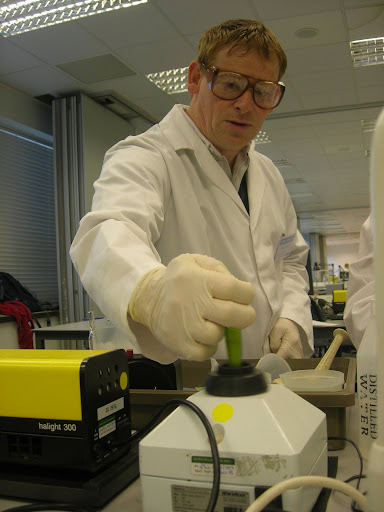Its time to face up to TMA-1 for this course. What is a level 3 TMA like?
Well firstly its a bit relentless. There are 7 questions in all, and most of them broken into sub parts.
Question 1 gives a table of data relating to bacterial infection rates. It gets you to do some simple statistics derived from these, such as working out case fatalities, and so on. It then gets you to write a few sentences on why the data may not be fully accurate. 18 marks for this part.
Question 2 is more simple, in that it is 12 marks to discuss three reasons why bacteria are likely to cause hospital acquired infections. This isn't too bad, except I struggle to find 12 worthwhile points in just a few sentences.
Question 3 looks at the disease syphilis, and the pathogen that causes it. The question ranges across the cause, change in incidence, and treatments for the disease. There are 22 marks available here, and again I struggle to find enough points to account for all the marks.
Question 4 covers Koch's postulates, and how it might be applied to the evidence that influenza might cause atherosclerosic plaques. 12 marks available here, but there seems precious little related information in the course book about this so I trawled through a number of papers..
Question 5 is a bit of a change. You are given a set of cases where the first sentence is true, and the second sentence may be true. You have to decide if the 2nd is, and if it is whether this is explained by the first statement. Another 12 marks here.
Question 6 is more descriptive asking why a knowledge of a pathogens biology might be useful in treating it. Another 12 marker.
Finally question 7 looks at viruses and what morphological changes there infection can cause.
Once again 12 marks.
I've spent quite some time on this TMA in fits and starts, but I'm struggling to pin down the connection between marks and salient points to make.
Oh well, its done now.
skip to main |
skip to sidebar

Life studying for a 2nd time around with the Open University and others.
My Latest Blip
About Me
Topics
- A251 (7)
- astronomy (1)
- CMA (4)
- coursera (8)
- courses (40)
- degree (1)
- ECA (2)
- exam (7)
- experiment (3)
- G+C (7)
- html (1)
- intro (1)
- java (1)
- quantum mechanics (1)
- residential (43)
- S103 (19)
- S170 (1)
- S171 (1)
- S193 (1)
- S194 (4)
- S196 (1)
- S204 (21)
- s205 (18)
- S282 (17)
- s283 (8)
- S320 (12)
- S366 (11)
- S377 (10)
- SD329 (9)
- sk195 (2)
- sxr103 (3)
- SXR208 (9)
- sxr270 (7)
- sxr270tutor (7)
- SXR375 (9)
- SXR376 (8)
- TMA (49)
- tutorial (4)
- udemy (3)




No comments:
Post a Comment